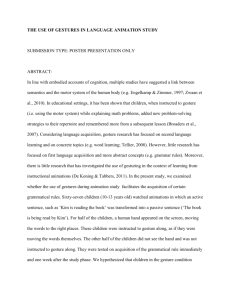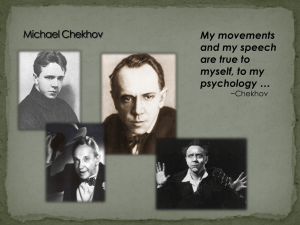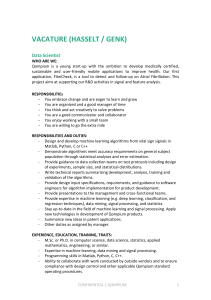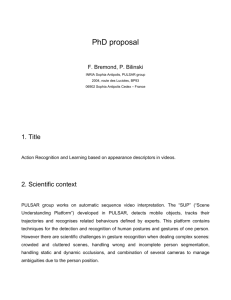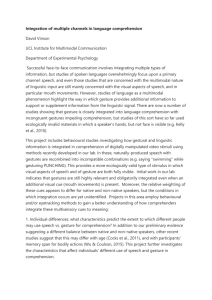34.A Simple Shape-Based Approach to Hand Gesture Recognition
advertisement
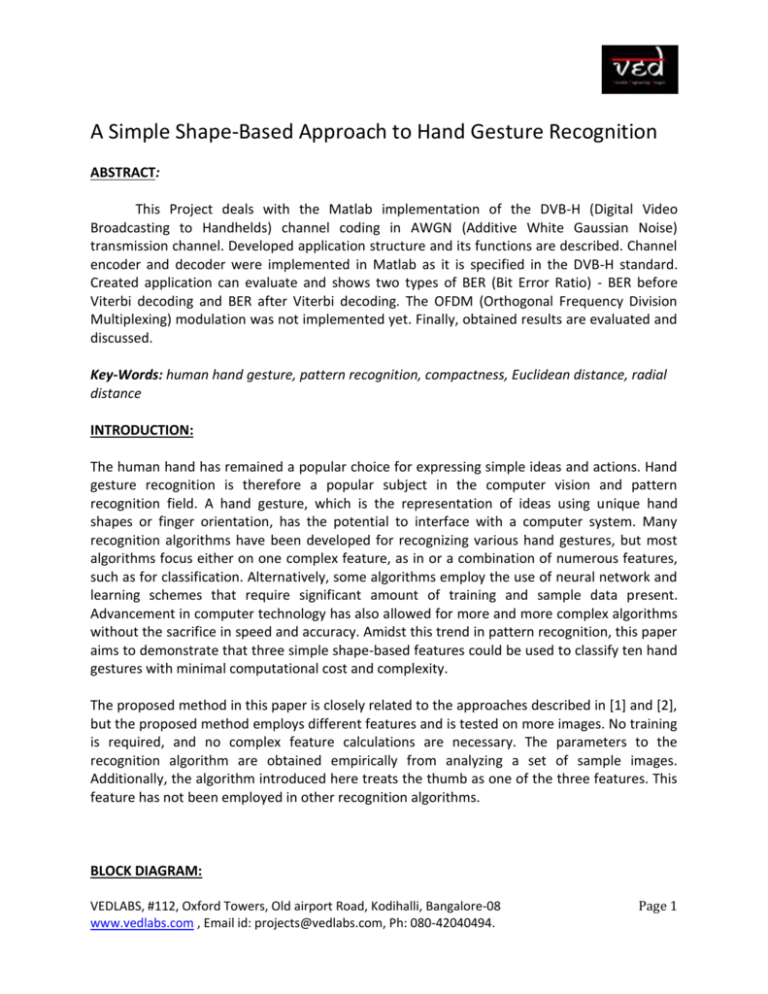
A Simple Shape-Based Approach to Hand Gesture Recognition ABSTRACT: This Project deals with the Matlab implementation of the DVB-H (Digital Video Broadcasting to Handhelds) channel coding in AWGN (Additive White Gaussian Noise) transmission channel. Developed application structure and its functions are described. Channel encoder and decoder were implemented in Matlab as it is specified in the DVB-H standard. Created application can evaluate and shows two types of BER (Bit Error Ratio) - BER before Viterbi decoding and BER after Viterbi decoding. The OFDM (Orthogonal Frequency Division Multiplexing) modulation was not implemented yet. Finally, obtained results are evaluated and discussed. Key-Words: human hand gesture, pattern recognition, compactness, Euclidean distance, radial distance INTRODUCTION: The human hand has remained a popular choice for expressing simple ideas and actions. Hand gesture recognition is therefore a popular subject in the computer vision and pattern recognition field. A hand gesture, which is the representation of ideas using unique hand shapes or finger orientation, has the potential to interface with a computer system. Many recognition algorithms have been developed for recognizing various hand gestures, but most algorithms focus either on one complex feature, as in or a combination of numerous features, such as for classification. Alternatively, some algorithms employ the use of neural network and learning schemes that require significant amount of training and sample data present. Advancement in computer technology has also allowed for more and more complex algorithms without the sacrifice in speed and accuracy. Amidst this trend in pattern recognition, this paper aims to demonstrate that three simple shape-based features could be used to classify ten hand gestures with minimal computational cost and complexity. The proposed method in this paper is closely related to the approaches described in [1] and [2], but the proposed method employs different features and is tested on more images. No training is required, and no complex feature calculations are necessary. The parameters to the recognition algorithm are obtained empirically from analyzing a set of sample images. Additionally, the algorithm introduced here treats the thumb as one of the three features. This feature has not been employed in other recognition algorithms. BLOCK DIAGRAM: VEDLABS, #112, Oxford Towers, Old airport Road, Kodihalli, Bangalore-08 www.vedlabs.com , Email id: projects@vedlabs.com, Ph: 080-42040494. Page 1 HARDWARE AND SOFTWARE REQUIREMENTS: Software Requirement Specification: Operating System: Windows XP with SP2 Tool: MATLAB R2010, Version: 7.10.0 Hardware Requirement specification: Minimum Intel Pentium IV Processor Primary memory: 2 GB RAM, REFERENCES: [1] N. Yasukochi, A. Mitome and R. Ishii, “A Recognition Method of Restricted Hand Shapes in Still Image and Moving Image as a Man- Machine Interface,” IEEE Conference on Human System Interactions, page 306-310, 2008. [2] T. Niidome and R. Ishii, “A GUI Support System for a Sight Handicapped Person by Using Hand Shape Recognition,” The 27th Annual Conference of the IEEE Industrial Electronics Society (EICON),Vol. 1, page 535-538, 2001. [3] S. Zhao, W. Tan, C. Wu, C. Liu, and S. Wen, “A Novel Interactive Method of Virtual Reality System Based on Hand Gesture Recognition,” Chinese Control and Decision Conference, page 5879-5882, 2009. [4] P. Premaratne and Q. Nguyen, “Consumer Electronics Control System based on Hand Gesture Moment Invariants,” Computer Vision IET, Vol. 1, page 35-41, March 2007. [5] H. Tauseef, M.A. Fahiem, and S. Farhan, “Recognition and Translation of Hand Gestures to Urdu Alphabets Using a Geometrical Classification,” Second International Conference in Visualization, page 213-217, July 2009. VEDLABS, #112, Oxford Towers, Old airport Road, Kodihalli, Bangalore-08 www.vedlabs.com , Email id: projects@vedlabs.com, Ph: 080-42040494. Page 2






